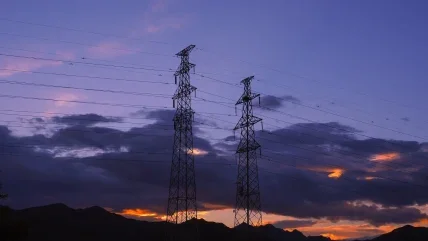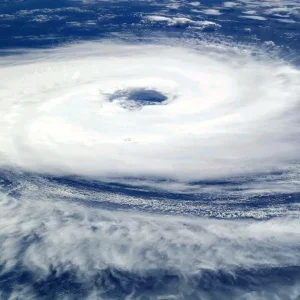
The wind technology industry has seen exponential growth over the past decade, driven by the global demand for sustainable and renewable energy sources. As wind farms proliferate, so does their dependence on advanced digital technologies for operations, monitoring, and optimisation. However, this increasing reliance on digital infrastructure exposes the industry to significant cyber security risks. This article delves into the critical aspects of cyber insecurity in the wind technology sector, exploring its implications, challenges, and potential solutions.
The Rising Threat Landscape
Understanding Cyber Insecurity
Cyber insecurity refers to the vulnerability of digital systems to cyber-attacks, which can result in data breaches, operational disruptions, and significant financial losses. In the context of wind technology, cyber threats can target various components, including turbine control systems, communication networks, and data management platforms.
The Stakes for the Wind Industry
The wind technology industry is particularly susceptible to cyber-attacks due to its dispersed and interconnected nature. Wind farms often span vast geographic areas and rely on remote monitoring and control systems. This decentralised structure makes it challenging to implement robust security measures uniformly across all assets.
Moreover, the financial stakes are high. A successful cyber-attack can lead to operational downtime, which directly impacts energy production and revenue. Additionally, breaches in data integrity can compromise the accuracy of performance analytics, affecting maintenance schedules and overall efficiency.
Key Vulnerabilities in Wind Technology
Turbine Control Systems
Wind turbines are equipped with sophisticated control systems that manage their operations. These systems are vulnerable to cyber-attacks, which can manipulate turbine behaviour, leading to inefficiencies or even physical damage. For instance, altering the blade pitch or yaw settings can reduce energy output or cause mechanical failures.
Communication Networks
Wind farms rely on communication networks to transmit data between turbines, substations, and central control units. These networks can be targeted by hackers to intercept sensitive information or inject malicious commands. Weak encryption protocols and unsecured communication channels are common points of entry for cyber threats.
Data Management Platforms
Data management platforms aggregate and analyse performance data from various turbines to optimise operations. Cyber-attacks on these platforms can corrupt data, leading to misguided operational decisions. Ensuring data integrity and securing databases against unauthorised access is paramount to maintaining system reliability.
Notable Cyber Incidents
The Ukraine Power Grid Attack
While not directly related to wind technology, the 2015 cyber-attack on Ukraine’s power grid serves as a stark reminder of the potential consequences of cyber insecurity in the energy sector. Hackers used spear-phishing emails to gain access to the grid’s control systems, causing widespread power outages. This incident underscores the need for robust cyber security measures in all segments of the energy industry, including wind power.
The Renewable Energy Sector Attack
In 2020, a European renewable energy company reported a significant cyber-attack that targeted its wind farm operations. The attackers exploited vulnerabilities in the company’s IT infrastructure to disrupt communication networks and compromise turbine control systems. This incident highlighted the sophistication of modern cyber threats and the need for comprehensive security strategies.
Challenges in Mitigating Cyber Threats
Legacy Systems
Many wind farms operate with legacy systems that were not designed with cyber security in mind. These older systems often lack the necessary security features to defend against modern cyber threats. Upgrading or replacing legacy infrastructure can be costly and logistically challenging, especially for large-scale operations.
Supply Chain Vulnerabilities
The wind technology industry relies on a complex supply chain involving multiple vendors and service providers. Each link in this chain represents a potential vulnerability. A cyber-attack on a single supplier can have cascading effects, compromising the security of the entire wind farm.
Regulatory Landscape
The regulatory framework for cyber security in the wind technology industry is still evolving. While some regions have established standards and guidelines, others lack comprehensive regulations. This disparity creates challenges for companies operating in multiple jurisdictions, as they must navigate varying requirements and ensure compliance with local laws.
Strategies for Enhancing Cyber Security
Implementing Advanced Security Protocols
To protect against cyber threats, wind technology companies must implement advanced security protocols across their operations. This includes encrypting communication networks, deploying firewalls, and utilising intrusion detection systems. Regular security audits and vulnerability assessments can help identify and mitigate potential risks.
Upgrading Legacy Systems
Addressing the vulnerabilities of legacy systems is critical for improving overall cyber security. Companies should prioritise upgrading outdated control systems and integrating modern security features. In some cases, replacing legacy equipment with newer, more secure alternatives may be necessary.
Strengthening Supply Chain Security
Ensuring the security of the supply chain is essential for mitigating cyber risks. Companies should conduct thorough security assessments of their vendors and service providers. Establishing clear security requirements and protocols for all supply chain partners can help reduce vulnerabilities and enhance overall resilience.
Enhancing Regulatory Compliance
Staying abreast of regulatory developments and ensuring compliance with relevant standards is crucial for mitigating legal and reputational risks. Companies should engage with industry bodies and regulatory authorities to stay informed about emerging cyber security requirements. Proactively adopting best practices and exceeding minimum compliance standards can further strengthen security posture.
Emerging Technologies and Future Directions
Artificial Intelligence and Machine Learning
Artificial intelligence (AI) and machine learning (ML) are playing an increasingly important role in cyber security. These technologies can analyse vast amounts of data to detect anomalies and identify potential threats in real-time. By leveraging AI and ML, wind technology companies can enhance their threat detection capabilities and respond more swiftly to emerging cyber risks.
Blockchain for Secure Data Management
Blockchain technology offers a promising solution for securing data management platforms. By providing a decentralised and tamper-proof ledger, blockchain can enhance data integrity and prevent unauthorised access. Integrating blockchain into wind farm operations can improve the security and transparency of data transactions.
Quantum Cryptography
Quantum cryptography represents the next frontier in secure communications. Unlike traditional encryption methods, which can be vulnerable to advanced hacking techniques, quantum cryptography offers theoretically unbreakable security. Although still in the experimental stage, this technology holds great potential for securing communication networks in the wind technology industry
Conclusion
Cyber insecurity poses a significant threat to the wind technology industry, with the potential to disrupt operations, compromise data integrity, and cause substantial financial losses. As the industry continues to grow and evolve, so too must its approach to cyber security. By understanding the unique vulnerabilities of wind technology and implementing comprehensive security measures, companies can safeguard their assets and ensure the reliable delivery of renewable energy. The adoption of emerging technologies and proactive regulatory compliance will further enhance the industry’s resilience against cyber threats, paving the way for a secure and sustainable energy future.






